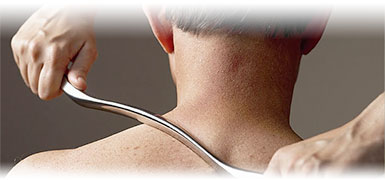Chiropractic Care
Treatment Approach of Unique Westchester Chiropractor and Massage Therapist
Chiropractic adjustments with Dr. Leigh Damkohler are just the beginning of highly-effective approaches to improve biomechanics, reduce nervous system interference, and help you feel great. Getting treated before or at the onset of an “ache” or “tightness” can keep an acute episode of pain or injury at bay. Keep in mind that not all treatment approaches by a chiropractor or physical therapy center are the same. In the Westchester, NY chiropractic and massage therapy office of Dr. Leigh Damkohler, appropriate soft tissue/muscle techniques are combined with traditional chiropractor adjustments at each visit. In addition to alleviating the patient’s symptoms, Dr. Leigh Damkohler’s goal is to help the patient identify causative factors and provide patient education to promote self-care and prevent recurrence or further pain and injury. Your individual care may encompass several of the components described below.
 Diversified Adjustments
Diversified Adjustments
Think of an adjustment as “tuning” a piano, adjusting each string so it produces the perfect tone.
After identifying which joints have lost their normal motion, a specific manual adjustment is administered to free up “stuck” joints. The direction, speed, depth and angle that are used are the result of years of experience, practice and a thorough understanding of spinal mechanics.
Keeping the spinal joints moving in their normal motion keeps your nervous system, and you, running at your best. Adjustments are a key component to reducing the impact of physical and emotional stressors on your body.
Myofascial Release
The muscles and fascia of the body receive hands-on treatment to reduce tightness, pain, spasm, trigger points, referred pain or numbness.
You know what muscles are. Think of fascia as a body stocking that connects all your organs, muscles and tissues. When you’re healthy, the fascia is relaxed. Like our clothing, it has the ability to stretch and move without restriction. But that changes when we experience physical trauma, scarring or inflammation. Then, the fascia loses its pliability. It can become tight, restricted and a source of tension, reduced motion and pain. Fascial tightening can manifest as back pain, neck pain, headaches, fatigue during exercise, trigger points, frozen shoulder, tennis elbow, “sciatica”, and other pain and restricted or repetitive motion syndromes.
 One or more of the following myofascial release modalities are integrated:
One or more of the following myofascial release modalities are integrated:
- Neuromuscular Therapy
- Nimmo Trigger Point Technique
- Graston Technique®
- Post-Isometric Relaxation or Stretch
Physiotherapy
Electrical muscle stimulation, ultrasound, heat or cryotherapy are used when appropriate. If you are thinking about chiropractor vs. physical therapy, consider the entire approach of Westchester Chiropractor and Licensed Massage Therapist Dr. Leigh Damkohler.
Rehab/Self-Care
Postural modifications, stretches, and core strengthening protocols are provided to help maintain the benefits of treatment. Diet, detoxifications, weight loss or nutritional assessments may also be discussed.
Customized vitamins and supplements designed specficially for your body are available.
Your New Normal
Progress is rarely a straight line. Expect some ups and downs as your body learns it can abandon its defensive posture. As your body heals, your brain will eventually recognize your new posture and muscle tone as normal. With time, expect better movement, more strength, flexibility, improved posture and greater vitality.




